#the mix of Northern and Southern European in France is similar to that in Spain
Photo






ETHNIES OF THE WORLD : Balkans ethnies part 2 !
The Croats or Croatian are a South Slavic european people inhabitants of the country of Croatia and Bosnia and Herzegovina. They speak croatian. The ethnonym "Croat" is first attested during the 9th century CE. Traditionally, scholarship has placed the arrival of the Croats in the 7th century, primarily on the basis of the later Byzantine document De Administrando Imperio. As such, the arrival of the Croats was seen as a second wave of Slavic migrations, which took over Dalmatia from Avar hegemony, and there are between 7 to 9 millions of them worldwide. Due to political, social and economic reasons, many Croats migrated to North and South America (Argentina, Chile, and Paraguay). They have their own culture and traditions.
The Bosniaks or Bosniacs are a South Slavic european people inhabitants of the country of Bosnia and Herzegovina, and parts of Serbia and Montenegro. They speak bosnian. The western Balkans had been reconquered from "barbarians" by Byzantine Emperor Justinian. Slavs raided the western Balkans, including Bosnia, in the 6th century. After the death of Serbian ruler Časlav, Bosnia seems to have broken away from the Serbian state and became politically independent.,After frequent change of rule over the area between regional powers, a de facto independent Bosnian state known as the Banate of Bosnia arose in the 12th century, and there are around 3 millions of them throught the world. Ethnic cleansing and genocide during the Bosnian War (1992–95) have had an effect on the territorial distribution of the population. They have their own culture and traditions.
The Bulgarians are a South Slavic european people inhabitants of the country of Bulgaria. They speak bulgarian. The population of Bulgaria descend from peoples with different origins and numbers. They became assimilated by the Slavic settlers in the First Bulgarian Empire. Two of the non-Slavic nations maintain a legacy among modern-day Bulgarians : the Thracians, from whom cultural and ethnic elements were taken, and the Bulgars, who donated the ethnonym and the early statehood. The First Bulgarian Empire was founded in 681, and there around 9 millions of them. They have their own culture and traditions.
The Romanians are a Romance european people inhabitants of the country of Romania. They speak romanian. Two theories account for the origin of the Romanian people. One, known as the Daco-Roman continuity theory, posits that they are descendants of Romans and Romanized indigenous peoples living in the Roman Province of Dacia, while the other posits that the Romanians are descendants of Romans and Romanized indigenous populations of the former Roman provinces of Illyria, Moesia, Thrace, and Macedon, and the ancestors of Romanians later migrated from these Roman provinces south of the Danube into the area which they inhabit today, and there are 24 to 30 millions of them. They have their own culture and traditions.
The Aromanians, sometimes referred as Vlachs, are a Romance european people inhabitants of regions of Greece, Albania and North Macedonia. They speak aromanian. Vlachs originate from the Romanised people of south-eastern Europe; from a mix of Roman colonists (from various Roman provinces) and indigenous peoples who were Latinised. The Vlach peoples from the south Balkans have generally been identified as the indigenous populations with Thracian & Illyrian (Thraco-Illyrian) and Greco-Roman (Hellenic) origins, there are around 250 000 of them. They have their own culture and traditions.
The Romani, also known as Roma, are a Indo-Aryan people inhabitants of mainly the South of Europe, but can be found throught the whole of Europe and America, as they are a nomadic people. They speak romani, and generally the language of their native region. The Romani originate from the northern Indian subcontinent, from the Rajasthan, Haryana, and Punjab regions of modern-day India. They are dispersed, but their most concentrated populations are located in Europe, especially Central, Eastern and Southern Europe (including Turkey, Spain and Southern France). The Romani arrived in Mid-West Asia and Europe around 1007. They have been associated with another Indo-Aryan group, the Dom people: the two groups have been said to have separated from each other or, at least, to share a similar history. Specifically, the ancestors of both the Romani and the Dom left North India sometime between the 6th and 11th century. They are around 2 to 20 millions of them worldwide. Many have migrated to America, due to the heavy discrimination and opression that they suffer from the non-Romani Europeans. They have their own culture and traditions.
Those aesthetics are part of a serie. I’m covering the biggest ethnies of the world, starting by Europe.
#Ethnies of the world#croats#croatia#roma#romani#bulgarians#bulgaria#bosnia#bosniaks#bosnians#romanians#romania#aromanians#ethnology#geography#ethnies#aesthetic#europe
15 notes
·
View notes
Text
Not the Truffle You Think About
What is a truffle? If the first thing that comes to mind is that dark, pungent, high-end cuisine delicacy, you are absolutely right. But today’s topic isn’t about the kind of truffle you’d be served in a 3-star Michelin fine dining restaurant. Instead, today’s truffle-of-the-hour nudges your tongue with its bursts of honey-like sweetness. It has its own place in the culinary world too, and its name is Mattirolomyces terfezioides.

Image Credit: Honey Truffle
What’s in the Name?
This species of delectable fungus belongs to the Ascomycota phylum. This fungus identified with the genus Terfezia, the “desert truffle” genus, for some time before mycologists discovered that it was not quite like its other desert truffle siblings. Today, terfezioides belongs to the genus Mattirolomyces, and hence its name, Mattirolomyces terfezioides. However, a quick Google search of its former name, Terfezia terfezioides, would also get you the same delicious treat.
Not a True Desert Truffle
So why did M. terfezioides get kicked out of its former genus? We start by identifying what it means to be a “desert truffle”. A textbook definition of truffles defines them as underground-growing ascomycetes belonging to the genus Tuber. A “desert truffle”, therefore, is a truffle that grows in a xeric desert of particular abiotic characteristics. Mattirolomyces terfezioides, when discovered in 1888 by Mattirolo in Piemonte, Northern Italy, was originally described as Choiromyces terfezioides, but Fischer placed it into the Mattirolomyces genus in 1938. Then, in 1971, another scientist named Trappe proposed to place terfezioides in the Terfezia genus, though still keeping Mattirolomyces as its subgenus. Thus, for some time, this fungus belonged to the “poster genus” for desert truffles.
Later, mycologists decided to limit the genus Terfezia to only fungi from the Mediterranean and Middle East. Here emerged a problem: terfezioides is found in places outside those listed boundaries and does not actually inhabit deserts or semiarid areas; instead, the fungus grows in farms and urban environments. The tables officially turned when molecular phylogenetic analyses showed that the Mattirolomyces genus was in fact separate from the Terfezia genus: fungi in Mattirolomyces had many structural differences in their Ascomycota morphology, peridium, asci, and ascospore ornamentation compared to those in Terfezia. Furthermore, Mattirolomyces formed characteristic septate, intracellular hyphal coils instead of structures similar to those in Terfezia, and seemed to engage in relationships with plants in different ways. Thus, terfezioides found its new home solely in the genus Mattirolomyces, which was no longer a subgenus of Terfezia.

Image Credit: Hungarian Truffle
Life of the Yellow M. terfezioides
M. terfezioides looks like an irregularly shaped lump of a whitish-yellow color, similar to that of an old piece of soap. Its body weighs about 100 grams and has wrinkled patterns that form lobes and a smooth outer skin. Once cut, the fungus has numerous whitish veins branching inside that are more cream colored than the exterior. The dry matter is composed mostly of carbohydrates (close to 60%), about 25% protein, of which 85% is digestible by humans, and small amounts of fat, crude fiber, and ascorbic acid. Nutritionally, the truffle is high in potassium and phosphate, and contains a good amount of iron. Its odor is generally agreeable, save for occasions when it becomes overbearing with overmature ascomata (fruiting body of the truffle) or bacteria that cause the fungus to lyse. Most M. terfezioides have been developed in the Carpatian Basin, where the fungus is collected in mixed black locust forests on sandy soils. Generally speaking, the location of this fungus is still yet to be clarified. Although its geographically diverse body has been sighted in mostly Hungary, its easternmost locality, its westernmost known location is France, and it has also been spotted in Bulgaria, Italy, Spain, and even outside of Europe, including India and China. These truffles like to grow in high pH (basic) calcareous soils, and rainfall and rain distribution can heavily affect yields in the wild. In any given season however, as little as 200 to 250 mm of rain may bring about a good yield.
This honey truffle’s growth habits, however, are quite strange. In many instances it is found to have some relationship with both woody and herbaceous plants. It tends to form mycorrhizal symbiosis with tree roots, mainly with Robinia pseudoacacia, which is an invasive species of trees that has become a threat in Bulgarian forests. Currently, the research behind M. terfezioides’ symbiotic relationship is still ongoing. The most recent studies of M. terfezioides’ interactions with other host plants have shown that M. terfezioides is actually not the main fungal partner of these plants. However, most of how this fungus goes about creating symbiotic relationships with plants still remains unsolved.
When it comes to collecting truffles, European forest truffles generally require trained dogs or pigs to assist truffle hunters to collect truffles, but this is not the case with M. terfezioides. Its fruiting bodies develop next to or close to the soil surface, and as they grow larger, they lift up the soil on top of it and form mounds that are visible to the naked eye of trained truffle hunters. Thus, M. terfezioides hunting is markedly easier and less time-consuming than European truffle hunting.

Image Credit: Sweet Honey Truffle
M. terfezioides and You Today
Why is this honey truffle even relevant to you? When you first thought of “truffle”, you probably visualized the much-praised forest truffles, the dark “diamond of the kitchen”. So why didn’t you think of M. terfezioides? It’s quite a diamond too! This lack of recognition may be because it is not found in most European countries. However, as of late, desert truffles are becoming more and more desirable, and increasing research has been dedicated to their cultivation.
M. terfezioides consumption was very high during the Austro-Hungarian Empire, and the truffle market was booming. Unfortunately, the war and communist era instilled in the citizens the idea that M. terfezioides was a symbol of “bourgeois decadence”, and thus sent the truffle industry tumbling. Today in Hungary, where most M. terfezioides are found, they are making a comeback and being put to good use in the preparation of many desserts, such as ice creams, sorbets, and cakes. A gastronomic perspective of this truffle describes it as “begin[ning] with a very pleasant, mild mushroomy flavor on the tongue, but then develop[ing] into a long, lingering honey-sweet finish”. If that description hasn’t gotten you salivating, hopefully it’s gotten you at least slightly intrigued by this interesting combination of flavors.
So again, why is this honey truffle even relevant to you? Maybe if you’re lucky enough, you’ll get to meet it in cuisines, or if you’re adventurous enough, you’ll go out of your way to try some yourself. And who knows? Maybe next time, when you think of truffles, you’ll find yourself craving the delicious, sweet, shroom-y delicacy of M. terfezioides!
References:
Assyov, Boris, and Monica Slavona. 2016. “First Bulgarian collections of Mattirolomyces terfezioides (Pezizaceae), a potentially valuable hypogeous fungus.” Phytologia Baltanica 22(3): 303–307.
Earthy Delights. n.d. “Fresh Honey Truffles (Mattirolomyces terfezioides) - 3 oz.” Accessed February 22, 2018. http://www.earthy.com/Fresh-Honey-Truffles-from-Earthy-Delights.aspx.
Kagan-Zur, Varda, and Nurit Roth-Bejerano. 2008. “Desert Truffles.” FUNGI Magazine, 2008. http://www.fungimag.com/Truffle-Issue-08-articles/desert-truffles
Kovács, Gábor M., Erzsébet Jakucs, and István Bagi. 2007. “Identification of host plants and description of sclerotia of the truffle Mattirolomyces terfezioides.” Mycological Progress (2007) 6:19-26. https://doi.org/10.1007/s11557-006-0520-y
Kovács, Gábor M., James M Trappe. 2014. “Nomenclatural History and Genealogies of Desert Truffles.” In Desert Truffles, edited by Kagan-Zur, V., Roth-Bejerano, N., Sitrit, Y., Morte, A., 21-37. Springer-Verlag Berlin Heidelberg.
Kovács, Gábor M., María P. Martín, and Francisco D. Calonge. 2009. “First record of Mattirolomyces terfezioides from the Iberian Peninsula: its southern- and westernmost locality.” Mycotaxon Vol. 110: 325-220.
0 notes
Note
Hi Captain! I'm writing a story set in the Anglo-Saxon time in England. Od love to know whether it would be possible for my character to look Hispanic or Mixed Race (vaguely based on Anthony Ramos). Thanks!
Hello! It’s absolutely possible for your character to have mixed ancestry. In fact, semi-recent DNA studies show that British people have largely Spanish ancestry (or, rather, belong to the Iberian genetic group which means they have similar DNA to people of southern France and northern Spain). However, the actor you want to base your character of is Puerto Rican and I cannot say anything about his DNA. I can say, however that “The average Puerto Rican individual carries 12% Native American, 65% West Eurasian (Mediterranean, Northern European and/or Middle Eastern) and 20% Sub-Saharan African DNA.” This means that it’s not likely that your character would like Anthony Ramos. Perhaps your character would look something like Sebastian Armesto, British actor with a London-born Spanish father and British mother.
#history#dna#etnicities#this is meant as advice for fictional writing#this won't help you with your academic writing
18 notes
·
View notes
Link
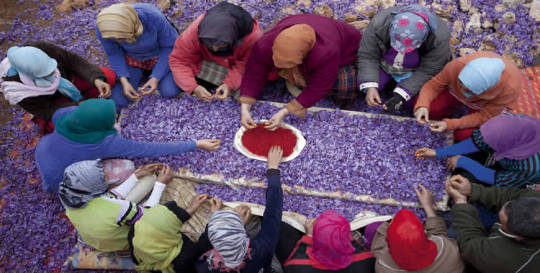
“Dried kesar or saffron has high carbohydrate content and is rich in vitamins and minerals. Owing to its high nutritional content and medicinal properties, the spice is used in food as seasoning or flavouring and to treat several ailments and health problems.”
Five Health Benefits of Kesar
Kesar is used to treat common ailments
Kesar helps to treat asthma
Kesar treats stress and insomnia
Kesar treats flatulence
Kesar treats Alzheimer’s
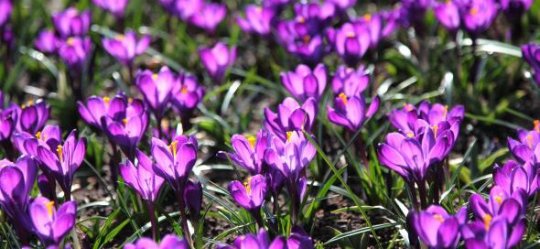
Five Beauty Benefits of Kesar
Kesar boosts ageless beauty
Kesar for glowing skin
Kesar treats acne
Kesar rids scars and wounds
Kesar treats dry skin
(via Kesar: Taste the incredible benefits of wonder spice saffron for great health and beauty | News Nation)
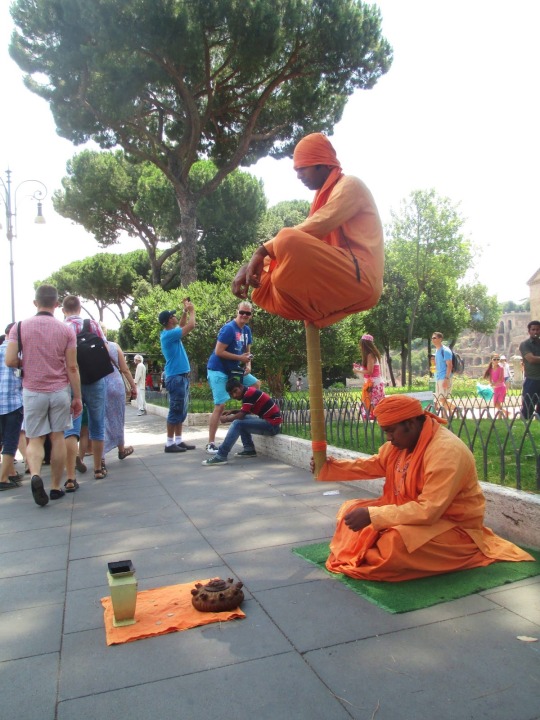
Saffron (color)
“Saffron is an orange color, resembling the color of the tip of the saffron crocus thread, from which the spice saffron is derived.
The color has some significance in Buddhism; it is worn by the monks of the Theravada tradition. It is also an important symbolic color in India, where it was chosen in 1947 as one of the three colors of the Indian flag after the nation gained its independence.
The color saffron is associated with the goddess of dawn (Eos in Greek mythology and Aurora in Roman mythology) in classical literature.
In the Pokémon games, there is a city named Saffron City.”

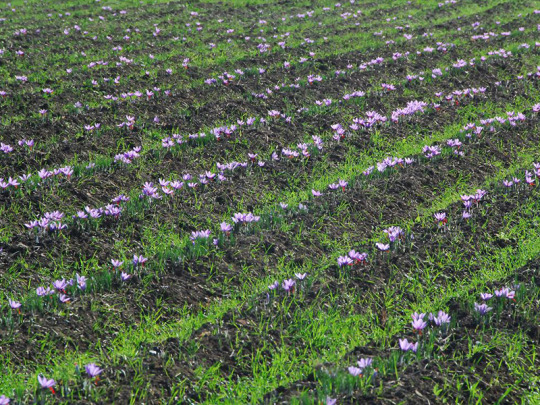
History of Saffron
“[T]he ancient Greeks knew it as "Thera". These frescoes likely date from the 16th or 17th century BC but may have been produced anywhere between 3000 and 1100 BC. They portray a Minoan goddess supervising the plucking of flowers and the gleaning of stigmas for use in the manufacture of what is possibly a therapeutic drug. A fresco from the same site also depicts a woman using saffron to treat her bleeding foot.”

“Ancient Greek legends tell of brazen sailors embarking on long and perilous voyages to the remote land of Cilicia, where they traveled to procure what they believed was the world's most valuable saffron. The best-known Hellenic saffron legend is that of Crocus and Smilax: The handsome youth Crocus sets out in pursuit of the nymph Smilax in the woods near Athens; in a brief dallying interlude of idyllic love, Smilax is flattered by his amorous advances, but all too soon tires of his attentions. He continues his pursuit; she resists. She bewitches Crocus: he is transformed—into a saffron crocus. Its radiant orange stigmas were held as a relict glow of an undying and unrequited passion.”
Cleopatra of late Ptolemaic Egypt used a quarter-cup of saffron in her warm baths, as she prized its colouring and cosmetic properties. She used it before encounters with men, trusting that saffron would render lovemaking yet more pleasurable...In Greco-Roman times saffron was widely traded across the Mediterranean by the Phoenicians. Their customers ranged from the perfumers of Rosetta, in Egypt, to physicians in Gaza to townsfolk in Rhodes, who wore pouches of saffron in order to mask the presence of malodorous fellow citizens during outings to the theatre.”
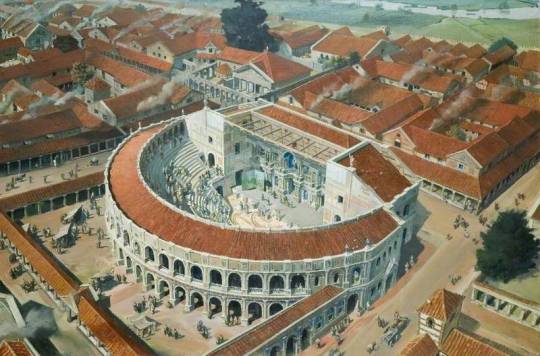
“The ancient Greeks and Romans prized saffron as a perfume or deodoriser and scattered it about their public spaces: royal halls, courts, and amphitheatres alike. When Nero entered Rome they spread saffron along the streets; wealthy Romans partook of daily saffron baths. They used it as mascara, stirred saffron threads into their wines, cast it aloft in their halls and streets as a potpourri, and offered it to their deities. Roman colonists took saffron with them when they settled in southern Roman Gaul, where it was extensively cultivated until the AD 271 barbarian invasion of Italy.”

The History of Saffron
“Persian saffron was heavily used by Alexander and his forces during their Asian campaigns. They mixed saffron into teas and dined on saffron rice. Alexander personally used saffron sprinkled in warm bath water, taking after Cyrus the Great...he believed it would heal his many wounds, and his faith in saffron grew with each treatment. He even recommended saffron baths for the ordinary men under him. The Greek soldiers, taken with saffron’s perceived curative properties, continued the practice after they returned to Macedonia.
Saffron cultivation in Europe declined steeply following the fall of the Roman Empire. For several centuries thereafter, saffron cultivation was rare or non-existent throughout Europe. This was reversed when Moorish civilization spread from North Africa to settle the Iberian Peninsula as well as parts of France and southern Italy. One theory states that Moors reintroduced saffron corms to the region around Poitiers after they lost the Battle of Tours to Charles Martel in AD 732.”
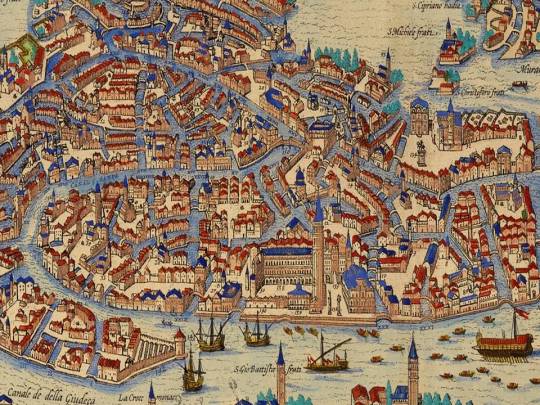
“The merchants of Venice continued their rule of the Mediterranean sea trade, trafficking varieties from Sicily, France and Spain, Austria, Crete and Greece, and the Ottoman Empire. Adulterated goods also made the rounds: those soaked in honey, mixed with marigold petals, or kept in damp cellars—all to add quick and cheap bulk. Irritated Nuremberg authorities passed the Safranschou code to de-louse the saffron trade. Adulterators were thus fined, imprisoned, and executed—by immolation.”
“Puritanical partisans favoured increasingly austere, unadorned, and unspiced foods. Saffron was also a labor-intensive crop, which became an increasing disadvantage as wages and time opportunity costs rose. And finally, an influx of more exotic spices from the far East due to the resurgent spice trade meant that the English, as well as other Europeans, had many more—and cheaper—seasonings to dally over...In addition, the elite who traditionally comprised the bulk of the saffron market were now growing increasingly interested in such intriguing new arrivals as chocolate, coffee, tea, and vanilla. Only in the south of France or in Italy and Spain, where the saffron harvest was culturally primal, did significant cultivation prevail.”
(via The History of Saffron | Cyrus Saffron blog)

Santucci’s legacy: the saffron plains of Abruzzo
“Just eight hectares of land are dedicated to saffron production in Abruzzo, but the harvested stems are widely regarded as the best in the world. And it’s all thanks to...
[T]he spice is made from the stems of the Crocus Sativus flower, which have to be gently picked by hand, and it takes roughly 500 hours to harvest a kilogram of saffron from 100,000 flowers. It’s this labour-intensive process that makes the spice more expensive than gold, gram for gram – and chefs can’t get enough of it. But how did this luxurious spice, originally from the Middle East, find its way to the central Italian region of Abruzzo?”
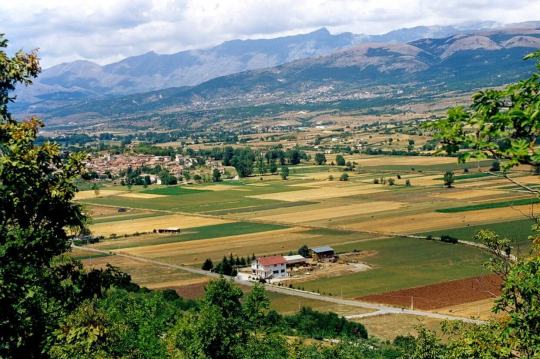
”The answer, of course, is steeped in myth and legend – as any Italian food worth its salt should be. The story goes that a Dominican monk belonging to the Santucci family...brought the spice back to Abruzzo after spending time in Iberia. During this time Iberia was under the rule of the Moors, and so the priest had experienced first-hand the heady, fragrant flavours associated with Middle Eastern cooking. Saffron was one of them.
The monk fled Iberia during the Inquisition, returning home to Abruzzo with the seeds of the Crocus Sativus flower. He...believed he could grow the spice back home due to the similar climate. The monk was correct – the flowers started growing, and saffron production in Italy was born.”

“Wealthy Italian families supposedly loved how it gave food a rich golden hue, and it became an essential ingredient in dishes such as risotto alla Milanese. Cakes and liqueurs relied on it for flavour and colour, as did painters who used it to create dyes. Soon enough demand saw the delicate little stems exported all over Italy, and the little town of Navelli – where the Santucci monk first planted his seeds – became famous across the country. The large nearby city of L’Aquila (now the region’s capital) also grew rapidly, funded by saffron money.”
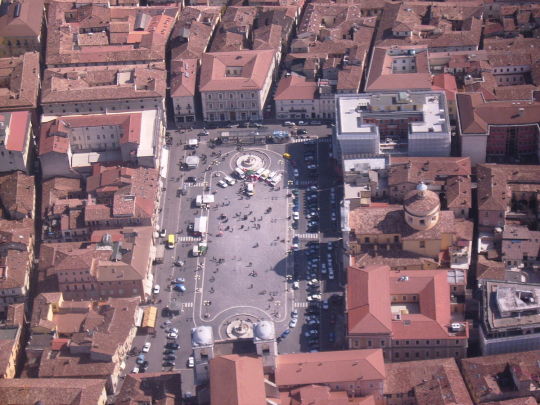
“Today, saffron production in Abruzzo is certainly a specialist area of farming. While there were over 400 hectares of saffron fields in the region around 1900, that has shrunk to just eight. That’s because saffron grown in the Middle East – particularly Iran – is much cheaper to produce...Another aspect of Abruzzese saffron that sets it apart is how the stems are roasted once harvested. This is done over smouldering logs, which intensifies the flavour and colour of the spice and gives it a longer shelf life.
Saffron...from Italy...is a beautiful ingredient...the spice grown and painstakingly harvested...is something else entirely. It’s a product that sheds light on Italy’s history, helped shape a region and continues to attract worldwide attention...might be expensive, but it’s certainly worth it.”
(via Santucci’s legacy: the saffron plains of Abruzzo | Great Italian Chefs)
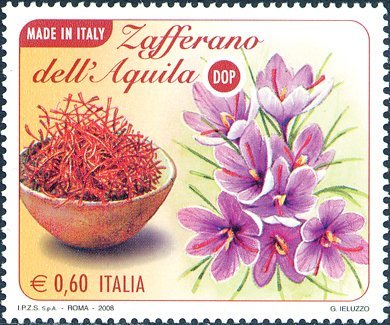
Finding Cathay
“Around the year 1300, a book took Europe by storm. It was Marco Polo's account of his travels to a fabulous country called Cathay, and all of the wonders he had seen there. He described black stones that burned like wood (coal), saffron-robed Buddhist monks, and money made out of paper.Of course, Cathay was actually China, which at that time was under Mongol rule. Marco Polo served in the court of Kublai Khan, founder of the Yuan Dynasty, and grandson of Genghis Khan.”

“The name "Cathay" is a European variation of "Khitai," which Central Asian tribes used to describe parts of northern China once dominated by the Khitan people. The Mongols had since crushed the Khitan clans and absorbed their people, erasing them as a separate ethnic identity, but their name lived on as a geographical designation. Since Marco Polo and his party approached China via Central Asia, along the Silk Road, they naturally heard the name Khitai used for the empire they sought.”

”Between about 1583 and 1598, the Jesuit missionary to China, Matteo Ricci, developed the theory that China was actually Cathay. He was well acquainted with Marco Polo's account and noticed striking similarities between Polo's observations of Cathay and his own of China. For one thing, Marco Polo had noted that Cathay was directly south of "Tartary," or Mongolia, and Ricci knew that Mongolia lay on the northern border of China...Ricci observed many of the same phenomena that Polo had noted, as well, such as people burning coal for fuel and using paper as money. The final straw, for Ricci, was when he met Muslim traders from the west in Beijing in 1598. They assured him that he was indeed living in the fabled country of Cathay.”
(via Finding Cathay | ThoughtCo.)
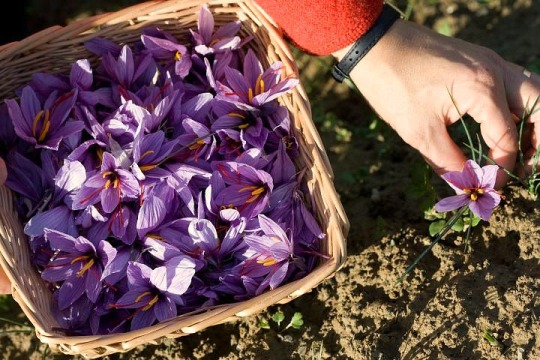
American-Grown Saffron Could Change the Spice Trade
“The goal is to discover the best cultivation method that results in a good crop of high-quality saffron.The results from this year’s experimental crop hints at the potential for domestically grown U.S. saffron. As a niche, “shoulder-season” crop that can be grown after the fall harvest, and with a high resale value—saffron fetches as much as $29,000 per kilogram (roughly $13,000 per pound)—it could be a boon for small farmers looking for another source of revenue. But all that would require the establishment of a market for premium, locally grown saffron.
Some research predicts the global saffron industry will be worth $2 billion by 2025. About 90 percent of the world’s saffron—including most of the 20 tons imported to the U.S. each year—comes from Iran; Spain and Italy are other significant producers.”

“Its most familiar usage is as a culinary spice; its distinctive aroma, flavor, and bright yellow color are often used in recipes for Spanish paella and Italian risotto and it’s also a classic ingredient in the French fish soup, Bouillabaisse. And saffron is also used as a fabric dye and is reputed to have nutritional and medicinal benefits for ailments including heart disease and depression. But it’s probably best known for its prices: as much as $29,000 per kilogram. Hence its nickname, “red gold.”
It’s the classic catch-22 of marketing: There has to be enough product for a market, and enough of a market to justify growing the product and supporting local production. Saffron’s reputation as exotic and expensive is something of a barrier for consumers, though there is small but steady demand for it.”
(via American-Grown Saffron Could Change the Spice Trade | Civil Eats)
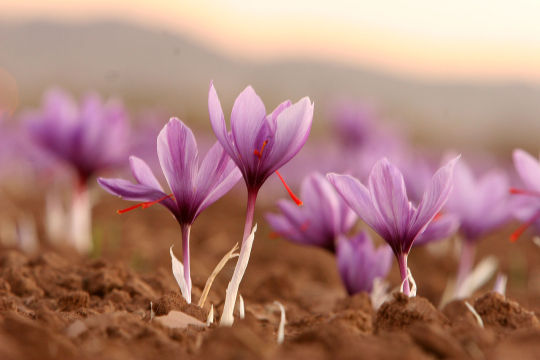
Saffron
“Almost all saffron grows in a belt from Spain in the west to Kashmir in the east...Microscale production of saffron can be found in Australia (mainly the state of Tasmania), Canada, Central Africa, China, Egypt, parts of England, France, Israel, Italy (Basilicata), Mexico, New Zealand, Sweden (Gotland), Turkey (mainly around the town of Safranbolu), the United States (California and Pennsylvania).”

#kesar#italiansaffron#abruzzesesaffron#marcopolo#khitan#cathay#saffron#redgold#worthmorethangold#prettyexpensive#todyeforcolors#spicyshortflower#pokemonsaffroncity#californiasaffron
0 notes
Text
20 Reds Under $20: Where the Values Live, for Now
The wine world looks a little different now than it did in September, when the last 20 Under $20 column was published, and further radical changes may be on the way.
That’s why this winter edition of 20 great values in red wine, all under $20 a bottle, may be a mural in watercolors, fated to fade quickly should an ill rain blow in.
The source of the volatility is tariffs placed by the United States on certain European wines. As of Oct. 18, the Trump administration put a 25 percent tax on wines under 14 percent alcohol from France, Spain and Germany, excluding sparkling wine. The tariff is a result of a dispute with the European Union over subsidies it gives to Airbus, its largest airplane manufacturer.
The administration has further threatened a 100 percent tariff on all wines from the European Union, as well as certain cheeses, spirits and other consumer goods, if the Airbus dispute is not resolved. Because of a French tax on big technology companies, a similar tariff has been threatened solely on Champagne. Though that one has been tabled, the wider tariff threat still looms.
The effects of the 25 percent tariff are already apparent, particularly on French wines. The value of wine imported from France dropped steeply after the tariff took effect, to roughly $57 million in November from about $130 million in October, according to the American Association of Wine Economists.
Producers, importers, distributors and retailers absorbed much of the price difference at first, and consumers did not see prices rise noticeably in the last quarter of 2019, the busiest time of the year for the wine trade.
In January, however, prices began to increase. What’s more, some importers have held off on new orders of wines, both in hopes that the first tariff would be resolved and out of fear that the next round might come midshipment.
I have long argued that the best values are found in the historic wine cultures of Europe. The astounding diversity of choices far exceeds what’s available in the United States, where a handful of grapes dominate. But this list includes only two wines from France, ordinarily a prime source for distinctive wine values.
Italy is still in the game with six bottles; that will change if the new tariff comes to pass. It will also affect selections from Spain, Portugal, Austria and Greece, which account for another six wines on the list.
Luckily, I found good bottles from Chile, Argentina and South Africa, all of which consumers may soon be exploring in greater depth. And I found three terrific wines from the United States.
The potential reduction in choices is a serious concern for consumers, but it pales next to the grievous harm such a tariff would do to jobs and businesses, including importers, distributors, retailers and restaurants, along with affiliated support workers, not to mention the wine producers themselves. If these companies that do so much to provide choices were to disappear, I’m not sure we would ever again see the wines they once procured.
Right now, however, the market is still full of options. These 20 bottles represent just a snapshot of what’s out there. If you don’t see these precise bottles, ask your merchant for similar choices, or you can consult previous 20 Under $20 columns.
You might see that prices for previous selections have risen. Nonetheless, they all remain pretty good values.
Matthiasson Tendu California Red Wine 2018 $19.99
Matthiasson is one of the most interesting California producers. Steve and Jill Klein Matthiasson understand the value of offering great, moderately priced bottles that are not simply cheap imitations. Tendu is Matthiasson’s value wine. It’s bright and lively, with balancing acidity and a little tannic grip, and it’s made without added sulfur dioxide, a stabilizer that is almost universally used throughout the wine world. The grapes — 47 percent aglianico, 42 percent montepulciano and 11 percent barbera — come from Dunnigan Hills in the northwest portion of the Central Valley.
Luyt Pipeño Carrizal Chile País Familia Ernesto Soto 2019 $18.99/1 Liter
Louis-Antoine Luyt is a French émigré who makes wine in Chile. In addition to his own wines, he works with a set of growers, including Ernesto Soto in the Maule Valley, who make Pipeño, a traditional, refreshing Chilean wine that goes back almost as far as the country itself. This one is made entirely from a very old vineyard of país, better known as mission, the grape brought to the New World by Spanish missionaries. It’s light, fresh and delicious, and goes down very easily. (Louis/Dressner Selections, New York)
TerraQuilia Falconero Zero I.G.P. Emilia-Romagna Sparkling Red Wine 2017 $18.99
Although it doesn’t carry the official appellation, this is a Lambrusco from the Emilia-Romagna region of Italy. It’s dry, savory and earthy, made from the grasparossa grape, one of the classic Lambrusco varieties. Most Lambrusco is made using industrial methods, but this one is made like a pétillant naturel, the oldest method of sparkling wine production: Midway through fermentation, the juice is bottled, and as the fermentation finishes in the sealed container, the resulting carbon dioxide carbonates the wine. Drink with salumi or pizza. (T. Elenteny Imports, New York)
Poderi Colla Dolcetto d’Alba Pian Balbo 2017 $18.99
Beppe Colla of Prunotto was one of the pillars of the Barolo region. He eventually sold the estate and, with his family in 1994, set up Poderi Colla, which produces superb Barolos and Barbarescos, as well as this excellent Dolcetto d’Alba. It’s understated and elegant, with fragrant floral aromas and flavors of spicy dark fruit. Enjoy this with a good mushroom risotto. (Grand Cru Selections, New York)
Domaine Alary Cairanne La Brunote 2016 $19.99
Domaine Alary is a leading producer in the Southern Rhône commune of Cairanne, an area in the larger Côtes-du-Rhône that was deemed distinctive enough to use its own name rather than the regional appellation. This spicy red — a blend of grenache, mourvèdre and carignan — has plenty of body and character. It’s stylish, balanced and intriguing. (Weygandt-Metzler, Unionville, Pa.)
Marietta Cellars North Coast Román Zinfandel 2016 $19.96
This zinfandel, with a little petite sirah and barbera in the mix, is brawny and rich. But like an old-school California zin, it turns spicy on the palate rather than sweet. With plenty of acidity, it’s balanced and refreshing despite its 14.9 percent alcohol scale. The wine is named after Román Cisneros, a longtime employee at Marietta.
Fattoria Rodáno Chianti Classico 2017 $17.96
This is a weighty, intense Chianti, rich and complicated, with a lot going on. It’s not the sort of focused wine that delivers sangiovese flavors with laserlike clarity, but instead is a fascinating collection of fruit, herbal and earthy sensations that nonetheless make for a delicious wine. (Polaner Selections, Mount Kisco, N.Y.)
Meinklang Österreich Blaufränkisch 2018 $19.96
Meinklang, in eastern Austria near the Hungarian border, is a consistently excellent producer, and wine is just a part of what it does. The estate is a mixed environment, with animals, grains, fruits and vegetables, farmed biodynamically with an eye toward protecting the soil. The vines benefit from this sort of enlightened approach, as do the wines. This blaufränkisch feels alive in the glass and tastes of violets and plums. (Zev Rovine Selections/Fruit of the Vines, Long Island City, N.Y.)
Domaine de la Grosse Pierre Chiroubles “La Grosse Pierre” 2018 $19.96
Pauline Passot was working as a sommelier in Lyon when she decided that her real calling was to make wine. She returned to her family home in Chiroubles, one of the 10 crus of Beaujolais, and rented vineyard land from her parents. Her first vintage was 2016. The 2018 is so pretty I just wanted to inhale the floral aromas. It’s a gentle, delightful wine. (Weygandt-Metzler)
Viña Zorzal Navarra Garnacha 2017 $10.99
This fragrant, floral red, made from old-vine garnacha, is one of the best deals I have seen in a while. It’s lively and spicy, and while not especially complex, it’s fresh, juicy and offers unexpected nuances. Serve lightly chilled. (Bowler Wine, New York)
Ver Sacrum Uco Valley Garnacha Los Chacayes 2017 $19.99
Ver Sacrum specializes in wines made from Rhône varieties in the Mendoza region of Argentina. Argentine garnacha? This wine, from a high-altitude vineyard in the Uco Valley, will not remind anybody of Châteauneuf-du-Pape. It’s not weighty, but light, bright, fresh and juicy. (Brazos Wine Imports, Brooklyn, N.Y.)
Ampeleia I.G.P. Toscana Rosso Unlitro 2018 $19.99/1 liter
Ampeleia, on the coast of Tuscany, is a collaboration of three friends, including Elisabetta Foradori, the wonderful grower-producer from the Trentino region in northern Italy. The Unlitro is a liter of beautifully fragrant, graceful and light wine that is intense and full of flavor. It’s made from a blend of grapes: grenache, carignan, mourvèdre, alicante bouschet and sangiovese. Yes, it almost sounds like a blend from the south of France, yet this wine offers a distinctly Italian interpretation. (Bowler Wine)
Kokkinos Naoussa Xinomavro 2015 $19.99
Newcomers to the xinomavro grape, seeking reference points to describe its characteristics, will often point to the nebbiolo wines of northwestern Italy. This xinomavro from Naoussa in northern Greece suggests the comparison is apt. The dark tarlike fruit, acidity and firm tannins are reminiscent of nebbiolo, yet there’s also a brightness that is xinomavro’s own. Serve it with — what else? — lamb chops. (Verity Wine Partners, New York)
Mateus Nicolau de Almeida Trans Douro Express Douro Baixo Corgo 2018 $19.99
Mateus Nicolau de Almeida’s family once owned the Ramos Pinto port house, which was sold eventually to Louis Roederer. Mr. de Almeida turned to making dry, unfortified wines that would express the various terroirs of the Douro. This bottle comes from the western Douro, and is made from a blend of familiar port grapes like touriga nacional and touriga franca, among others. It’s fragrant and lively, with fresh, almost exotic fruit flavors grounded by a pleasing earthiness. (Bowler Wine)
Onabay Vineyards North Fork of Long Island Cabernet Franc Côt-Fermented 2016 $19.96
The name of this juicy, herbal, balanced wine, Côt-Fermented, is a pun that requires maybe more explanation than it’s worth, but here goes. It’s a blended wine, 90 percent cabernet franc and 10 percent malbec. The grapes are fermented together, or co-fermented. Côt, pronounced coe, is the local Loire Valley name for malbec, and this wine is made in a Loire style, lighter on its feet than many Bordeaux-style cab francs, not to mention North Fork renditions. Côt-fermented indeed.
Storm Point Swartland Red Blend 2018 $16.99
This wine from the Swartland region, northeast of Cape Town, South Africa, is a homage to the red blends of the south of France. It’s 56 percent cinsault, a workhorse grape that is getting more attention and care these days, with the remainder syrah and carignan. It’s fruity yet lithe, underlined with light tannins. (Vine Street Imports, Mount Laurel, N.J.)
Tiberio Montepulciano d’Abruzzo 2017 $19.99
Tiberio has become one of my favorite producers in the Abruzzo region of southeastern Italy. The whites are superb, and so is this bright, vibrant entry-level red, with earthy minerality, a touch of welcome bitterness and a light tannic grip. (The Sorting Table, Napa, Calif.)
Ioppa Colline Novaresi Nebbiolo 2018 $17.99
Good nebbiolo doesn’t just come from the Langhe. All over the northern Piedmont, higher altitude nebbiolo wines, often easier to consume when young than those from the Langhe, come from areas like Ghemme, Gattinara and Colline Novaresi, just to name a few. This one — from Ioppa, a small, family operation based in Ghemme — is just plain delicious, emphasizing the easy-drinking, dark-fruited side of nebbiolo. (Grand Cru Selections)
Hermanos de Peciña Señorío de P. Peciña Rioja Cosecha 2018 $15.99
This is an entry-level bottle from one of my favorite Rioja producers. It’s made from the estate’s youngest vines, which are still around 25 years old, and unlike more ambitious Riojas, it is not aged in oak, which leaves it fresh, fruity and immediately accessible. It’s a balanced, refreshing expression of tempranillo from a good Rioja terroir. (Polaner Selections)
Monje Tenerife Tinto Tradicional 2016 $19.99
The scattering of volcanic islands just off the southwest coast of Morocco known as the Canary Islands produces wonderful wines that are often great values. This one comes from Monje, a good family estate on Tenerife, in the center of the chain. It’s made largely of the listán negro grape, blended with a little negramoll and some listán blanco, a white grape better known as palomino. It’s lovely and slightly exotic with the barest tannic grip. (Bowler Wine)
from WordPress https://mastcomm.com/20-reds-under-20-where-the-values-live-for-now/
0 notes
Text
Quick Facts About the ETIAS Countries in Europe that You Can Visit in 2021
If you’re planning a trip to Europe anytime soon, then you’ve probably heard that by 2021, there will be a new visa waiver for you to apply for. The European Travel Information and Authorization System or ETIAS is an authorization that grants entry for visa-exempt nationals in Schengen countries for a period of 90 days. So instead of visiting one country, you can visit different countries all on one trip with this visa waiver. But hold on. Not all countries are part of the Schengen area, which means this waiver isn’t necessarily an all-access pass to the entirety of Europe.
Before you start picking what sites to see, you need to know the countries covered by ETIAS to know where you’re allowed entry. Here is a list of ETIAS-covered countries and a couple of facts about the places you could visit.
ETIAS Map: A Quick Tour through the European Countries to Visit in 2021
22 European Union Schengen Countries
There are currently 22 EU countries that are part of the ETIAS-required countries, all of which are most frequently visited by tourists. Here is a quick look into these countries and the region of Europe that you can find them in.
Northern Europe
Countries: Denmark, Estonia, Finland, Latvia, Lithuania, Sweden
Diverse in nature, climate, and vegetation, Northern Europe generally has a high quality of living.
Low population densities, urbanization is booming
Unique Places to Check Out
Malmo, Sweden
A city with a mix of old and new
Filled with cafes, fashionable bars, and Dutch Renaissance buildings
Faroe Islands, Denmark
Volcanic islands part of Denmark connected by road tunnels, bridges, and causeways, 40 percent of the population is a self-governing territory.
Ideal for hiking and birdwatching
Lapland, Finland
A snowy region that is known for skiing and the infamous Ice Hotel
Perfect place to catch a glimpse of the Northern lights
Southern Europe
Countries: Italy, Greece, Malta, Spain, Portugal, Slovenia
Also known as Mediterranean Europe
The Romance languages are spoken here–Italian, Spanish, and Greek being the most widely used
Most Popular Places to Visit
Barcelona, Spain
The second-largest city in Spain known for its charm and rich culture
Features stunning architecture and several historical attractions
Rome, Italy
One of the most visited places in Europe by tourists
Full of history with the Roman Colosseum standing as a UNESCO Heritage
Santorini, Greece
A volcano island more than 120 miles away from mainland Greece
Known for its amazing views and has become a popular destination wedding venue of choice.
Eastern Europe
Countries: Czech Republic, Hungary, Poland, Slovakia
This is a part of Europe that is very diverse in cultures, languages, and ethnicities and rich in history.
Popular Destinations of the Region
Prague, Czech Republic
A picturesque city shrouded in mystery, dark history, and breathtaking architecture
The Prague castle is a famous destination for tourists year-round
Budapest, Hungary
The capital city of Hungary known for its commercial and cultural charm
Thermal baths and nightclubs (optional) are a must-try in the city
Western Europe
Countries: Germany, Belgium, Luxembourg, Netherlands, France
A region with high living standards, a successful tourist trade, and rich agriculture
Must-See Underrated Destinations
Rugen Island, Germany
Island in the Baltic Sea filled with romantic seaside resorts and beautiful beaches
Known for the Jasmund National Park, a chalk cliff 528 feet over the sea
Annecy, France
Also called “Pearl of the French Alps”
Skiing in the winter, hiking in the summer
Vianden, Luxembourg
Home to the Vianden Castle near the River Our
The Victor Hugo museum is located here
4 Non-EU Schengen Countries
These 4 countries are not part of the European Union but are included in the countries you can visit with ETIAS.
Iceland
Known as the “Land of Fire and Ice,” this country born from volcanic eruptions is known for its glaciers and majestic nature of both greenery and ice
Liechtenstein
A small country filled with castle tourist spots, mimicking a fairytale-like ambiance
Norway
Scandinavian Country that is known for its Viking history, interesting historical architecture, and breathtaking landscapes
Switzerland
A mountainous country rich in beautiful natural attractions and peaceful cities and villages
3 Micro-States part of the Schengen Area
The 3 Micro-states that are de facto part of the Schengen area can be found within some of the European countries above.
Monaco
An independent state in France filled with upscale modern institutions such as casinos and yacht harbors
San Marino
A mountainous state within Italy that is part of the world’s oldest republics, keeping many of its historic sites
Vatican City
This is the Roman Catholic headquarters ran by Rome and home to the Pope
Travel Guide on European Countries that ETIAS Doesn’t Cover
Places that weren’t listed in the ETIAS Countries list above have different requirements to be filled, so make sure you don’t cross their borders on your trip.
Here is a list of countries you probably know that have different visa requirements.
United Kingdom
Bulgaria
Croatia
Cyprus
Ireland
Romania
With the ETIAS soon to be implemented in 2021, it is important to know where you can and cannot go so that you don’t overstep boundaries. It can also help you set up your ideal itinerary of places to visit and sites to see to make the most of your 90-day stay. And if you can’t get the opportunity to see them all in one go, you can always save them for the next trip.
ALSO READ: Places to Visit in France and the Eiffel Tower isn’t One of Them!
If you have some inquiries about ETIAS that you want to be answered directly, then
Etiasvisaschengen.com is an independent platform that can help you understand its fundamentals. This company also provides visa waiver assistance service that can guide you through the process by the time it is implemented in 2021. Contact us directly for inquiries and other visa-related services we offer.
Found this helpful? Visit our news page for similar informative content.
The post Quick Facts About the ETIAS Countries in Europe that You Can Visit in 2021 appeared first on ETIAS VISA Schengen.
Article source here: Quick Facts About the ETIAS Countries in Europe that You Can Visit in 2021
0 notes
Text
20 Reds Under $20: Where the Values Live, for Now
The wine world looks a little different now than it did in September, when the last 20 Under $20 column was published, and further radical changes may be on the way.
That’s why this winter edition of 20 great values in red wine, all under $20 a bottle, may be a mural in watercolors, fated to fade quickly should an ill rain blow in.
The source of the volatility is tariffs placed by the United States on certain European wines. As of Oct. 18, the Trump administration put a 25 percent tax on wines under 14 percent alcohol from France, Spain and Germany, excluding sparkling wine. The tariff is a result of a dispute with the European Union over subsidies it gives to Airbus, its largest airplane manufacturer.
The administration has further threatened a 100 percent tariff on all wines from the European Union, as well as certain cheeses, spirits and other consumer goods, if the Airbus dispute is not resolved. Because of a French tax on big technology companies, a similar tariff has been threatened solely on Champagne. Though that one has been tabled, the wider tariff threat still looms.
The effects of the 25 percent tariff are already apparent, particularly on French wines. The value of wine imported from France dropped steeply after the tariff took effect, to roughly $57 million in November from about $130 million in October, according to the American Association of Wine Economists.
Producers, importers, distributors and retailers absorbed much of the price difference at first, and consumers did not see prices rise noticeably in the last quarter of 2019, the busiest time of the year for the wine trade.
In January, however, prices began to increase. What’s more, some importers have held off on new orders of wines, both in hopes that the first tariff would be resolved and out of fear that the next round might come midshipment.
I have long argued that the best values are found in the historic wine cultures of Europe. The astounding diversity of choices far exceeds what’s available in the United States, where a handful of grapes dominate. But this list includes only two wines from France, ordinarily a prime source for distinctive wine values.
Italy is still in the game with six bottles; that will change if the new tariff comes to pass. It will also affect selections from Spain, Portugal, Austria and Greece, which account for another six wines on the list.
Luckily, I found good bottles from Chile, Argentina and South Africa, all of which consumers may soon be exploring in greater depth. And I found three terrific wines from the United States.
The potential reduction in choices is a serious concern for consumers, but it pales next to the grievous harm such a tariff would do to jobs and businesses, including importers, distributors, retailers and restaurants, along with affiliated support workers, not to mention the wine producers themselves. If these companies that do so much to provide choices were to disappear, I’m not sure we would ever again see the wines they once procured.
Right now, however, the market is still full of options. These 20 bottles represent just a snapshot of what’s out there. If you don’t see these precise bottles, ask your merchant for similar choices, or you can consult previous 20 Under $20 columns.
You might see that prices for previous selections have risen. Nonetheless, they all remain pretty good values.
Matthiasson Tendu California Red Wine 2018 $19.99
Matthiasson is one of the most interesting California producers. Steve and Jill Klein Matthiasson understand the value of offering great, moderately priced bottles that are not simply cheap imitations. Tendu is Matthiasson’s value wine. It’s bright and lively, with balancing acidity and a little tannic grip, and it’s made without added sulfur dioxide, a stabilizer that is almost universally used throughout the wine world. The grapes — 47 percent aglianico, 42 percent montepulciano and 11 percent barbera — come from Dunnigan Hills in the northwest portion of the Central Valley.
Luyt Pipeño Carrizal Chile País Familia Ernesto Soto 2019 $18.99/1 Liter
Louis-Antoine Luyt is a French émigré who makes wine in Chile. In addition to his own wines, he works with a set of growers, including Ernesto Soto in the Maule Valley, who make Pipeño, a traditional, refreshing Chilean wine that goes back almost as far as the country itself. This one is made entirely from a very old vineyard of país, better known as mission, the grape brought to the New World by Spanish missionaries. It’s light, fresh and delicious, and goes down very easily. (Louis/Dressner Selections, New York)
TerraQuilia Falconero Zero I.G.P. Emilia-Romagna Sparkling Red Wine 2017 $18.99
Although it doesn’t carry the official appellation, this is a Lambrusco from the Emilia-Romagna region of Italy. It’s dry, savory and earthy, made from the grasparossa grape, one of the classic Lambrusco varieties. Most Lambrusco is made using industrial methods, but this one is made like a pétillant naturel, the oldest method of sparkling wine production: Midway through fermentation, the juice is bottled, and as the fermentation finishes in the sealed container, the resulting carbon dioxide carbonates the wine. Drink with salumi or pizza. (T. Elenteny Imports, New York)
Poderi Colla Dolcetto d’Alba Pian Balbo 2017 $18.99
Beppe Colla of Prunotto was one of the pillars of the Barolo region. He eventually sold the estate and, with his family in 1994, set up Poderi Colla, which produces superb Barolos and Barbarescos, as well as this excellent Dolcetto d’Alba. It’s understated and elegant, with fragrant floral aromas and flavors of spicy dark fruit. Enjoy this with a good mushroom risotto. (Grand Cru Selections, New York)
Domaine Alary Cairanne La Brunote 2016 $19.99
Domaine Alary is a leading producer in the Southern Rhône commune of Cairanne, an area in the larger Côtes-du-Rhône that was deemed distinctive enough to use its own name rather than the regional appellation. This spicy red — a blend of grenache, mourvèdre and carignan — has plenty of body and character. It’s stylish, balanced and intriguing. (Weygandt-Metzler, Unionville, Pa.)
Marietta Cellars North Coast Román Zinfandel 2016 $19.96
This zinfandel, with a little petite sirah and barbera in the mix, is brawny and rich. But like an old-school California zin, it turns spicy on the palate rather than sweet. With plenty of acidity, it’s balanced and refreshing despite its 14.9 percent alcohol scale. The wine is named after Román Cisneros, a longtime employee at Marietta.
Fattoria Rodáno Chianti Classico 2017 $17.96
This is a weighty, intense Chianti, rich and complicated, with a lot going on. It’s not the sort of focused wine that delivers sangiovese flavors with laserlike clarity, but instead is a fascinating collection of fruit, herbal and earthy sensations that nonetheless make for a delicious wine. (Polaner Selections, Mount Kisco, N.Y.)
Meinklang Österreich Blaufränkisch 2018 $19.96
Meinklang, in eastern Austria near the Hungarian border, is a consistently excellent producer, and wine is just a part of what it does. The estate is a mixed environment, with animals, grains, fruits and vegetables, farmed biodynamically with an eye toward protecting the soil. The vines benefit from this sort of enlightened approach, as do the wines. This blaufränkisch feels alive in the glass and tastes of violets and plums. (Zev Rovine Selections/Fruit of the Vines, Long Island City, N.Y.)
Domaine de la Grosse Pierre Chiroubles “La Grosse Pierre” 2018 $19.96
Pauline Passot was working as a sommelier in Lyon when she decided that her real calling was to make wine. She returned to her family home in Chiroubles, one of the 10 crus of Beaujolais, and rented vineyard land from her parents. Her first vintage was 2016. The 2018 is so pretty I just wanted to inhale the floral aromas. It’s a gentle, delightful wine. (Weygandt-Metzler)
Viña Zorzal Navarra Garnacha 2017 $10.99
This fragrant, floral red, made from old-vine garnacha, is one of the best deals I have seen in a while. It’s lively and spicy, and while not especially complex, it’s fresh, juicy and offers unexpected nuances. Serve lightly chilled. (Bowler Wine, New York)
Ver Sacrum Uco Valley Garnacha Los Chacayes 2017 $19.99
Ver Sacrum specializes in wines made from Rhône varieties in the Mendoza region of Argentina. Argentine garnacha? This wine, from a high-altitude vineyard in the Uco Valley, will not remind anybody of Châteauneuf-du-Pape. It’s not weighty, but light, bright, fresh and juicy. (Brazos Wine Imports, Brooklyn, N.Y.)
Ampeleia I.G.P. Toscana Rosso Unlitro 2018 $19.99/1 liter
Ampeleia, on the coast of Tuscany, is a collaboration of three friends, including Elisabetta Foradori, the wonderful grower-producer from the Trentino region in northern Italy. The Unlitro is a liter of beautifully fragrant, graceful and light wine that is intense and full of flavor. It’s made from a blend of grapes: grenache, carignan, mourvèdre, alicante bouschet and sangiovese. Yes, it almost sounds like a blend from the south of France, yet this wine offers a distinctly Italian interpretation. (Bowler Wine)
Kokkinos Naoussa Xinomavro 2015 $19.99
Newcomers to the xinomavro grape, seeking reference points to describe its characteristics, will often point to the nebbiolo wines of northwestern Italy. This xinomavro from Naoussa in northern Greece suggests the comparison is apt. The dark tarlike fruit, acidity and firm tannins are reminiscent of nebbiolo, yet there’s also a brightness that is xinomavro’s own. Serve it with — what else? — lamb chops. (Verity Wine Partners, New York)
Mateus Nicolau de Almeida Trans Douro Express Douro Baixo Corgo 2018 $19.99
Mateus Nicolau de Almeida’s family once owned the Ramos Pinto port house, which was sold eventually to Louis Roederer. Mr. de Almeida turned to making dry, unfortified wines that would express the various terroirs of the Douro. This bottle comes from the western Douro, and is made from a blend of familiar port grapes like touriga nacional and touriga franca, among others. It’s fragrant and lively, with fresh, almost exotic fruit flavors grounded by a pleasing earthiness. (Bowler Wine)
Onabay Vineyards North Fork of Long Island Cabernet Franc Côt-Fermented 2016 $19.96
The name of this juicy, herbal, balanced wine, Côt-Fermented, is a pun that requires maybe more explanation than it’s worth, but here goes. It’s a blended wine, 90 percent cabernet franc and 10 percent malbec. The grapes are fermented together, or co-fermented. Côt, pronounced coe, is the local Loire Valley name for malbec, and this wine is made in a Loire style, lighter on its feet than many Bordeaux-style cab francs, not to mention North Fork renditions. Côt-fermented indeed.
Storm Point Swartland Red Blend 2018 $16.99
This wine from the Swartland region, northeast of Cape Town, South Africa, is a homage to the red blends of the south of France. It’s 56 percent cinsault, a workhorse grape that is getting more attention and care these days, with the remainder syrah and carignan. It’s fruity yet lithe, underlined with light tannins. (Vine Street Imports, Mount Laurel, N.J.)
Tiberio Montepulciano d’Abruzzo 2017 $19.99
Tiberio has become one of my favorite producers in the Abruzzo region of southeastern Italy. The whites are superb, and so is this bright, vibrant entry-level red, with earthy minerality, a touch of welcome bitterness and a light tannic grip. (The Sorting Table, Napa, Calif.)
Ioppa Colline Novaresi Nebbiolo 2018 $17.99
Good nebbiolo doesn’t just come from the Langhe. All over the northern Piedmont, higher altitude nebbiolo wines, often easier to consume when young than those from the Langhe, come from areas like Ghemme, Gattinara and Colline Novaresi, just to name a few. This one — from Ioppa, a small, family operation based in Ghemme — is just plain delicious, emphasizing the easy-drinking, dark-fruited side of nebbiolo. (Grand Cru Selections)
Hermanos de Peciña Señorío de P. Peciña Rioja Cosecha 2018 $15.99
This is an entry-level bottle from one of my favorite Rioja producers. It’s made from the estate’s youngest vines, which are still around 25 years old, and unlike more ambitious Riojas, it is not aged in oak, which leaves it fresh, fruity and immediately accessible. It’s a balanced, refreshing expression of tempranillo from a good Rioja terroir. (Polaner Selections)
Monje Tenerife Tinto Tradicional 2016 $19.99
The scattering of volcanic islands just off the southwest coast of Morocco known as the Canary Islands produces wonderful wines that are often great values. This one comes from Monje, a good family estate on Tenerife, in the center of the chain. It’s made largely of the listán negro grape, blended with a little negramoll and some listán blanco, a white grape better known as palomino. It’s lovely and slightly exotic with the barest tannic grip. (Bowler Wine)
from WordPress https://mastcomm.com/20-reds-under-20-where-the-values-live-for-now/
0 notes